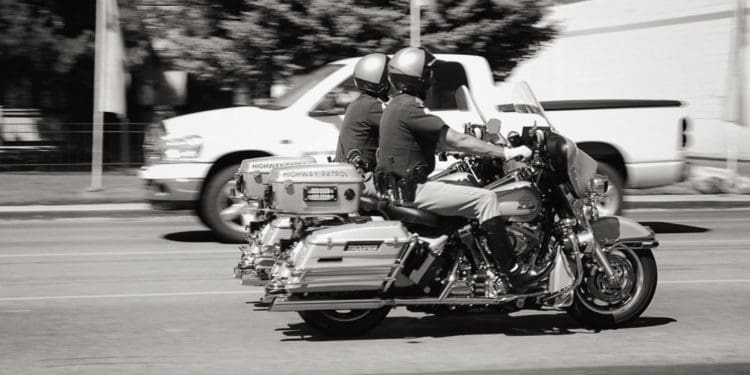George Floyd did not die in an instant. He suffocated to a slow death, pleading “I can’t breathe,” as a Minneapolis police officer pinned his knee to Floyd’s neck for nearly nine minutes.
What haunts Paul Noel, the deputy superintendent of the New Orleans Police Department, is that three other officers watched it happen.
“That’s what I can’t get past,” Noel said. “This was preventable.”
The New Orleans Police Department, which has been under a federal consent decree since 2012 for widespread misconduct following Hurricane Katrina seven years earlier, is now a national leader in peer intervention training. Many experts, civil rights lawyers and law enforcement leaders believe such training might have prevented Floyd’s death. But only a handful of departments use it.
Peer intervention training instills the idea that officers have a duty to act as a check on their fellow officers’ misconduct, such as using excessive force, planting evidence or lying in official reports. They are legally obligated, the training teaches, to quickly stop an officer from committing an act of improper policing before it leads to firings, criminal charges or death.
The three officers who watched Floyd die, Noel said, should have stopped it. Their own police department has rules requiring as much, but it lacks the comprehensive training New Orleans has.
The arresting officer, former Minneapolis police officer Derek Chauvin, has been charged with murder, while the three witnessing officers have been charged with aiding and abetting murder. “The law enforcement profession needs to recognize that we need to change,” Noel said, “that we need to do better.”
Peer intervention training instills the idea that officers have a duty to act as a check on their fellow officers’ misconduct, such as using excessive force, planting evidence or lying in official reports.
As protesters in cities around the country rally against police brutality, some law enforcement agencies are trying to gain public trust and prevent future tragedies. Advocates of peer intervention say training that puts the oversight onus on fellow officers could help solve systemic problems in law enforcement.
“You should be requiring this for every person,” said Christy Lopez, who led the U.S. Department of Justice Civil Rights Division’s investigation and consent decree negotiations with the Ferguson, Missouri, Police Department after the 2014 shooting of Michael Brown.
“This is a no-brainer,” said Lopez, who now co-leads Georgetown Law’s Innovative Policing Program. “There’s no downside to requiring this.”
After Floyd’s death, more police departments and state police training academies are preparing to adopt this training for their officers.
Washington state may become the first state to implement peer intervention training for city and county law enforcement recruits, said Sue Rahr, executive director of the Washington State Criminal Justice Training Commission, which designs state training curriculum.
There must be a culture shift in law enforcement, Rahr told Stateline. The “blue wall of silence” and no-snitch traditions can no longer be tolerated, and failure to intervene in police misconduct should be met with swift punishment.
But how do departments change that culture? Rahr said. This week, she has a call with leading proponents of peer intervention as she prepares to bring the training to her academy.
While she has been interested in this training for some time, conversations she had with her instructors after Floyd’s death added a sense of urgency.
“This moment is extremely challenging,” she said. “We are really trying to change the culture in a way that we’re approaching our communities to make peace and safety the highlight, not enforcement.”
Broad racial and ethnic coalitions prompt policing changes
On the other side of the country, the Northern Virginia Criminal Justice Training Academy also plans to add this training to its curriculum for officers in the coming months, said Captain Brian M. Berke, the deputy director of basic training at the Ashburn, Virginia, facility. Berke has long considered the training after seeing it presented at law enforcement conferences.
Berke has seen firsthand what happens when officers stand by while fellow officers act inappropriately.
Berke has seen firsthand what happens when officers stand by while fellow officers act inappropriately. Officers must police each other, he said, which can be challenging.
“We are always under a microscope, and our actions are judged quickly,” he said. “We are expected to be highly trained and be able to govern our emotions and reactions. But we are human beings like everyone else.”
Other states and departments are considering different changes after Floyd’s death.
New York lawmakers are debating the repeal of a 44-year-old state law that shields internal files of police misconduct from the public. California last year began unsealing similar complaints after a new law was enacted. Officials in New Jersey and Vermont are boosting their civil rights divisions.
In Congress, a bipartisan group of lawmakers also is looking at legislation to stop the transfer of military-style weaponry from the Pentagon to local police departments, which civil rights activists say has caused untold damage to community relations with law enforcement.
Peer intervention training is one of many solutions that should be applied nationwide, said Lynda Garcia, the policing campaign director of the Leadership Conference Education Fund, a Washington, D.C.-based nonprofit that last year released a 400-page report on implementing fair, safe and effective community policing.
“It has to be a robust, all-hands-on-deck effort in order to adequately reform the police that is necessary at this point,” she said. “What we are seeing in cities across the nation is a collective exasperation for change.”
The active bystander
In his peer intervention police training, Jonathan Aronie often points to a scenario many officers have experienced: What to do when a perpetrator spits in an officer’s face?
The first reaction of many officers is to hit the perpetrator, which could lead to injuries to both parties and criminal charges against the officer, said Aronie, lead federal monitor for the New Orleans Police Department and an architect of its peer intervention training program, Ethical Policing Is Courageous (EPIC), which is retaught in part to officers and leaders every year.
Instead, fellow officers should intervene, separate the officer from the offender and de-escalate the situation. The active bystander concept, when embraced from leaders on down, can change the mood in the training room, as officers understand its importance, he said.
This isn’t just a policing issue, he noted. In a wide array of industries, from aviation to medicine, the issue of passive bystandership has been addressed through specific training.
Co-pilots are taught to intervene when a fellow pilot’s decision-making may be impaired, just as fellow surgeons are required to report their colleagues’ malpractice. Police, too, should be active bystanders, he said.
“If you can teach someone to put on a bulletproof vest and you can teach them how to round a corner, you can teach someone to more effectively intervene,” he said. “We know that this can be taught and learned.”
The core teachings of this program come from a Holocaust survivor and emeritus professor of psychology at the University of Massachusetts, Amherst. Ervin Staub learned firsthand about the power of bystanders coming to the aid of people devalued by society in Nazi-occupied Hungary.
Staub studied clinical and real-world examples of bystanders acting or refusing to act to prevent harm — from the Rwandan genocide to the Rodney King beating in Los Angeles, where 17 officers watched colleagues hit King more than 50 times with batons in 1991.
Within seconds, he said, officers can intervene before fellow officers lash out violently. It can be as simple as tapping an officer on the shoulder or as forceful as a shove.
He helped New Orleans create the EPIC curriculum — the first department to add this comprehensive training.
“Active bystanders have great power,” he said.
Within seconds, he said, officers can intervene before fellow officers lash out violently. It can be as simple as tapping an officer on the shoulder or as forceful as a shove.
In Seattle, for example, police officers last week pinned down an alleged looter outside of a T-Mobile store in the downtown area. One officer knelt on the suspect’s neck — reminiscent of the tactic that killed George Floyd.
As onlookers screamed at the officer to get his knee off the suspect’s neck, the other officer on the scene grabbed his colleague’s knee and pulled it off.
Looters breached T-Mobile #seattleprotest pic.twitter.com/YMABkYCsIC
— Matt M. McKnight (@mattmillsphoto) May 31, 2020
The Seattle Police Department did not respond to a request for comment.
Aronie and his instructors have received pushback during training. Some trainees claim they already fully understand and practice intervention, but Aronie is quick to point out they do not. He also faces deep-seated cultural issues in law enforcement against ratting on fellow officers.
“It has nothing to do with ratting,” said Aronie, who is a D.C.-based attorney at the international law firm Sheppard Mullin. “It’s about intervening before you’re ever at a point where you have to rat. Peer intervention is a sign of loyalty.”
He is eager to take this training nationwide.
Meeting this moment
Peer intervention training is spreading to departments around the country.
Three years after it entered into a federal consent decree, the Baltimore Police Department is close to implementing its own version of EPIC training.
In collaboration with the U.S. Department of Justice, the department will soon release draft training documents for public comment, said Danny Murphy, deputy commissioner of the Compliance Bureau at the Baltimore Police Department.
Murphy, who was the deputy superintendent of the New Orleans Police Department from 2016 until 2019, has seen how that training can change law enforcement culture.
“This moment speaks to the necessity of EPIC training,” he said. “I really don’t think it’s an option at this point. We need to train our officers how to intervene to prevent such tragedies from happening. Failure to intervene is profoundly damaging in so many ways.”
Police train to be ‘social workers of last resort’
In addition to the Washington state and Northern Virginia training academies, Aronie, the federal monitor in New Orleans, has helped instruct leaders from police departments in Charleston, South Carolina; Muscatine, Iowa; Washington, D.C., and elsewhere. He also received recent requests for instruction from West Virginia and New York state.
Law enforcement officials, he said, are interested in how the training improved the New Orleans Police Department.
Federal monitors, police leadership and civil rights advocates agree that there has been a culture shift within the department. A January federal monitor report said there has been “remarkable progress over the last few years.”
While it is not possible to scientifically measure how well this training is working in New Orleans, said Ted Quant, a longtime New Orleans civil rights leader, the work there is laudable. How can misconduct that didn’t happen be measured, he asks?
Before this training existed, Quant, the former director of the Twomey Center for Peace through Justice at Loyola University, said he witnessed police be punished for attempting to stop fellow officers from using excessive force. He has advocated for peer intervention since the 1980s.
It took decades, a federal consent decree and massive departmental firings to bring peer intervention to New Orleans, he said. “The police department is invested in creating a new culture. You can’t enforce the law if people don’t respect you.”
Progress in New Orleans is in public view now, as peaceful protesters have flooded the streets.
While protests have turned violent in some cities, Police Chief Shaun Ferguson this week said New Orleans has been a “beacon of light on how to voice concerns without nonsense.”
Except for a few agitators, Ferguson said, protests have been nonviolent. New Orleans police displayed solidarity this week when they knelt with protesters on a highway.
This week, however, New Orleans police tear-gassed protesters to keep them off a major bridge. Officials say police gave demonstrators several opportunities to turn around. Ferguson said officers did not attack peaceful protesters, but those “who chose to use force.” The Louisiana chapter of the American Civil Liberties Union said they were “horrified” by that night’s police action.
As protests broke out after Floyd’s death, Ferguson sent an email to his colleagues last weekend, reminding them of their peer intervention training.
“When you intervene,” he wrote, “you have the ability to potentially save a life and a career.”









